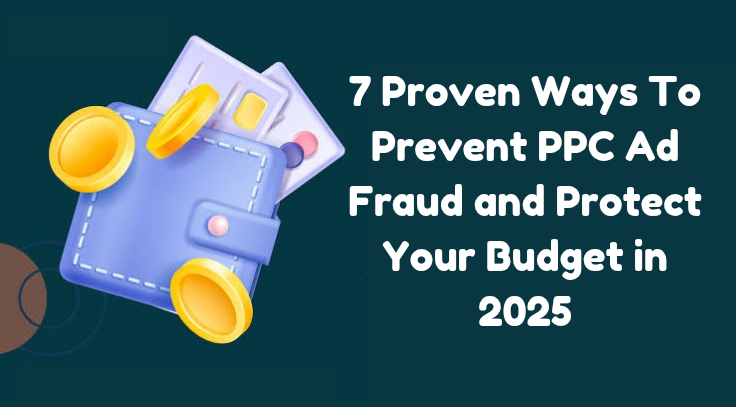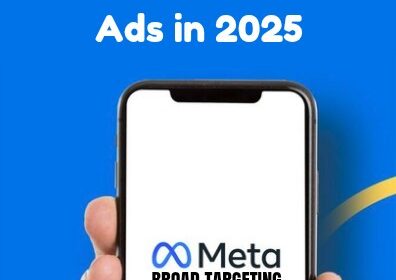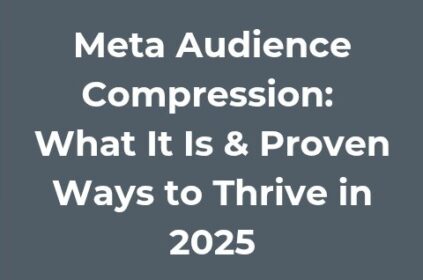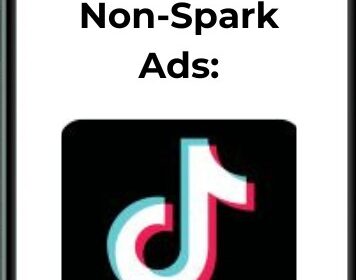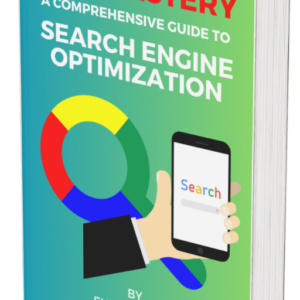Digital advertising keeps scaling, yet so does malicious activity designed to siphon budgets. Current estimates show that more than one-fifth of global digital ad spend was lost to illegitimate traffic in 2023, translating to roughly $84 billion.
Search and display are hit especially hard because automated bidding makes it easy for bots, click farms, and even unscrupulous competitors to exploit pay-per-click (PPC) systems.
Industry research further indicates that 14%–22% of clicks on paid search campaigns are invalid .
Against that backdrop, marketers need a disciplined framework to prevent PPC ad fraud before it drains performance metrics or corrupts optimisation algorithms.
The seven methods below form a pragmatic blueprint. Collectively, they answer the most common practitioner questions—how to secure a campaign, how to stop fraudulent ads from showing, how to keep brand safety intact, and which preventive measures work at scale—without disrupting legitimate reach.
Each section offers concrete steps, recommended settings, and realistic benchmarks so you can deploy improvements immediately.
Throughout this guide, the phrase prevent PPC ad fraud will appear frequently because repetition reinforces on-page relevance while mirroring real-world search intent.
Apply these steps one at a time, track results in your analytics stack, and iterate weekly. By the end of the article, you’ll have a clear path to protect spend, maintain reporting integrity, and safeguard long-term growth.
#1. Deploy Always-On Fraud-Detection Software
Commercial fraud-detection platforms analyse impressions and clicks in real time, comparing each interaction against hundreds of risk signals: IP reputation, device fingerprint, time-on-page anomalies, click velocity, and behavioural patterns inconsistent with humans.
Activating one of these tools is the fastest way to prevent PPC ad fraud because machine-learning models score every event before charging you for it.
They also integrate seamlessly with Google Ads, Microsoft Advertising, and major social platforms, allowing automatic refund requests on invalid traffic.
When evaluating vendors, demand independent audit certificates, transparent false-positive rates, and granular reporting at the click level.
According to a recent Spider AF white paper, networks with proactive fraud filters averaged 5.1 % invalid traffic in 2024, whereas unmanaged placements peaked above 46%.
Prioritise solutions that update bot databases at least daily; bad actors spin up new cloud servers in minutes, so stale lists quickly lose value.
Finally, integrate the tool’s exclusion script or API with your ad accounts and web analytics platform. This alignment lets you isolate campaigns where filtered traffic exceeds 8 %—a practical threshold for immediate investigation.
Maintaining this pipeline ensures you constantly prevent PPC ad fraud, rather than performing reactive clean-ups that arrive after budgets vanish.
#2. Strengthen IP Exclusions and Geofencing Rules
Another direct way to prevent PPC ad fraud involves controlling the geographic and network origins allowed to click your ads.
Start by exporting an IP report from your fraud-detection software or server logs. Sort by impressions, clicks, and conversion rate.
IP ranges with abnormally high clicks but zero conversions usually belong to botnets or click farms. Block them inside Google Ads’ IP exclusion list or via your demand-side platform.
Next, analyse geographic performance at the city level. If your service is available only in Nigeria and Ghana, but 11% of the budget is consumed in northern Russia, tighten location targeting to exclude that region. Even within target countries, refine geofencing to specific states where genuine demand exists.
Google Ads also offers Content Exclusions and Brand Safety settings. Disable “Embedded videos” and “Parked domains” if historical data shows poor quality.
Combined, these moves let you prevent PPC ad fraud caused by mis-matched locations or placements that deliver little value.
Because bots often spoof user agents to appear local, cross-checking IP and impression timestamp against server time helps surface inconsistencies faster than relying on campaign dashboards alone.
#3. Implement Device Fingerprinting and Frequency Caps
Sophisticated bots rotate IP addresses but frequently reuse device IDs or browser characteristics.
Device-fingerprint libraries hash user-agent strings, screen resolution, installed fonts, and more to generate near-unique identifiers.
Feeding these hashes into your fraud-detection workflow catches repeat offenders even when they sidestep IP blocks.
Couple fingerprinting with strict frequency caps. Legitimate users rarely click the same ad more than a few times per day.
Setting an ad-group cap at two impressions and one click per user per 24-hour cycle curbs duplicate bot activity.
Several studies show that up to 40 % of fraudulent clicks originate from automated scripts refreshing pages at predictable intervals.
Because platform interfaces vary, monitor effective frequency in your analytics tool. If one fingerprint logs ten clicks within twenty seconds, flag it for immediate exclusion.
This systematic approach helps prevent PPC ad fraud while maintaining reach among actual prospects.
Moreover, limiting exposure boosts brand safety by reducing the chance that malicious sites serve your creative to unwelcome audiences.
#4. Refine Audience and Placement Targeting
Broad match and auto-placement settings can amplify spend quickly, yet they also broaden exposure to low-quality inventory.
To prevent PPC ad fraud, refine targeting based on intent signals—remarketing lists, in-market segments, and first-party customer data—rather than generic affinity groups.
Tighter parameters minimise impressions among users who never convert, making fraud attempts less lucrative.
Placement reports often reveal mobile apps or parked domains with inflated click-through rates but no conversions.
Exclude these systematically. Google’s Ads Centre lets you block entire app categories; start with “Games” and “Utility” if they historically underperform.
Display network brand-safety tools also allow category and keyword exclusions—filter out content related to pirated streaming or digital giveaways, which fraudsters commonly exploit.
On social platforms, use placement controls to avoid Audience Network publishers known for invalid traffic.
A 2024 polygraph study indicated click-fraud rates of 57% on Facebook’s Audience Network compared to 11% on Google Search.
While numbers fluctuate, the principle stands: restricting distribution channels where oversight is weaker helps prevent PPC ad fraud and protects—indirectly—brand equity by avoiding low-quality environments.
#5. Analyse Server Logs and Conversion Data Daily
Ad platforms refund some invalid clicks automatically, yet internal validation provides an extra layer.
Parse raw server logs or analytics exports every 24 hours and compare click-timestamp sequences with conversion events.
Large clusters of clicks lacking correlated page-view depth or engagement time often indicate fraud.
Automate alerts for anomalies such as:
#1. Unusually high click volume during off-peak hours
#2. Click-to-conversion gaps exceeding 95% when the norm is 65%
#3. Sudden traffic surges from obsolete operating systems or screen resolutions
Whenever anomalies arise, cross-reference the offending IPs and device fingerprints with your exclusion lists.
Quick removal stops ongoing leakage. This routine also answers the underlying question of “what measures do we take to mitigate ad fraud and ensure brand safety in our ad operations?”—consistent, data-driven scrutiny is the measure.
By embedding the review in a daily workflow, you continuously prevent PPC ad fraud rather than treating verification as an afterthought.
#6. Enforce Supply-Path Optimisation and Third-Party Verification
Programmatic display and video transactions pass through multiple exchanges before a bid clears.
Each hop reduces transparency and creates openings for spoofed domains or hidden fees. Supply-path optimization (SPO) means buying inventory through the fewest trustworthy intermediaries.
Start by mapping your current supply chain; then cut redundant exchanges, focusing on those with accredited anti-fraud certifications from TAG or the MRC.
Third-party verification layers—Integral Ad Science, DoubleVerify, Moat—scan impression tags in real time for domain spoofing, viewability, and invalid traffic.
Many advertisers mistakenly think these layers duplicate the fraud-detection tools discussed earlier. In reality, they complement each other: verification inspects supply integrity, whereas click-validation evaluates post-impression behaviour.
Running both simultaneously forms a multi-layered shield, an approach experts predict will dominate in 2025 .
When your media plan uses SPO and verification, log-level transparency improves. Discrepancies are easier to identify, so you can prevent PPC ad fraud before campaigns scale.
Moreover, transparent supply paths bolster brand safety by guaranteeing your ads appear only on vetted domains, automatically addressing the concern of “how to stop fraud ads” reaching irrelevant or harmful sites.
#7. Establish a Continuous Optimisation and Refund Workflow
Even the most robust defences cannot block every fraudulent interaction. Therefore, closing the loop with a structured refund and optimisation process is essential to fully prevent PPC ad fraud from harming net performance.
Within Google Ads, submit invalid-traffic claims when unusual spikes pass platform thresholds. Document each case with log extracts, IP lists, and evidence from your fraud-detection partner.
Maintain a shared ledger—spreadsheet or ticketing system—tracking disputed spend, platform responses, and credit status.
Over time, patterns emerge: perhaps one display network requires monthly follow-ups, while another consistently auto-credits within three days.
Use these insights to rebalance media budgets toward channels exhibiting proactive cooperation.
Finally, feed refund outcomes back into bidding strategies. Lower bids slightly on placements where fraud persistently exceeds 5%.
Conversely, increase budgets on sources showing clean traffic, healthy conversion rates, and quick remediation.
The result is a self-correcting ecosystem that helps prevent PPC ad fraud from eroding efficiency while maximising legitimate reach.
Conclusion
Ad-fraud operators evolve quickly, yet disciplined marketers can stay ahead. Deploy real-time fraud detection, reinforce IP and geo controls, fingerprint devices, refine audiences and placements, inspect server logs, demand transparent supply paths, and institutionalise refund loops.
Collectively, these seven tactics answer every operational concern raised by advertisers: how to prevent ad fraud on a PPC campaign, how to prevent click fraud at scale, how to stop fraudulent ads, and how to safeguard brand integrity.
More importantly, they weave the phrase prevent PPC ad fraud into a practical framework you can measure and improve weekly.
Set benchmarks before implementing each step—invalid-click rate, conversion gap, net ROAS—and track deltas for 30 days.
Expect gradual but clear declines in wasted spend. Maintain momentum by reviewing dashboards every morning and updating exclusion lists at least twice per week.
In doing so, you’ll convert ad-fraud mitigation from a one-off project into an operational habit that fortifies budget, data quality, and long-term growth.
With persistent attention and the right technology mix, you can confidently advertise in 2025, knowing that you continuously prevent PPC ad fraud—and that every naira, dollar, or euro spent has the best possible chance of reaching a real human customer.

